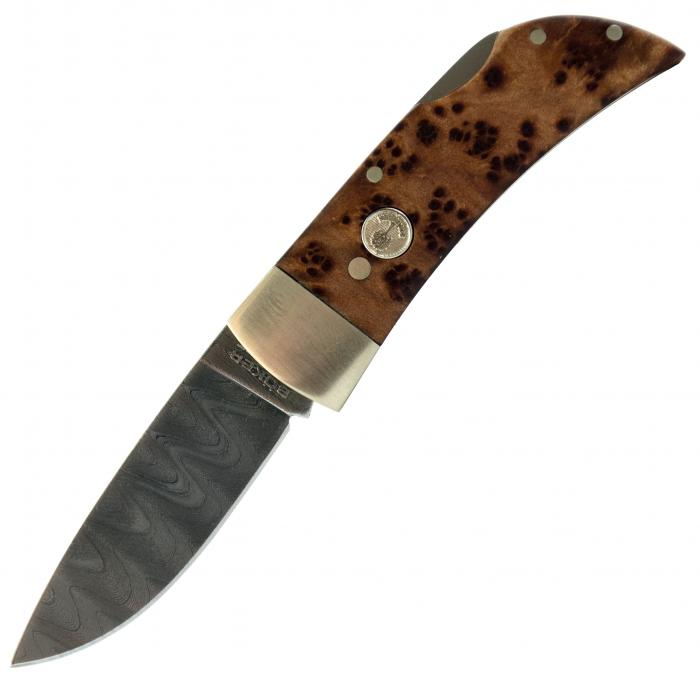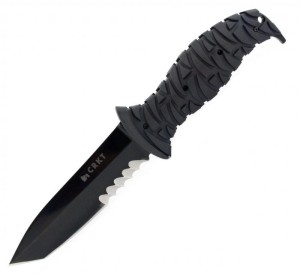The Perfect Survival Knife!
How to Pick the Perfect Survival Knife
By Tim Martinez of “The Knife Depot”
 Whether you’re picking up a survival knife to put in your bug-out bag or need a knife to carry out with you on outdoor adventures through the wilderness, it’s vital to pick out the perfect knife.
Whether you’re picking up a survival knife to put in your bug-out bag or need a knife to carry out with you on outdoor adventures through the wilderness, it’s vital to pick out the perfect knife.
Even though a survival knife is a matter of preference, there are some general guidelines to picking the perfect survival knife.
Fixed Blade vs. Folding Blade
 A few knife novices will debate whether a fixed blade or folding blade is more useful as a survival knife. Fixed blades offer more strength, but folders are more convenient. I’m here to declare the fixed blade the final and conclusive winner of the debate.
A few knife novices will debate whether a fixed blade or folding blade is more useful as a survival knife. Fixed blades offer more strength, but folders are more convenient. I’m here to declare the fixed blade the final and conclusive winner of the debate.
If your life depends on a tool, you want something that will not fail. While folders can be strong and dependable, the simple fact that there are more moving parts means there’s more possibility of failure. If you can only have one survival knife, make it a fixed blade. But I do recommend carrying a folder for less strenuous tasks.
Blade Edge
Take a look through some of the survival knives on that market and you’re bound to notice a few with massive serrations along the length of the blade. These serrations look intimidating and cool, but they will hinder the usefulness of your knife. If you’re insistent, a partially serrated blade is fine, but I highly recommend a plain edge on your survival knife.
The most obvious reason is that it’s easier to sharpen. Sharpening a serrated knife when you’re in the middle of nowhere is nearly impossible. With a plain edge, you can get a keen edge with the aid of some rocks. Not only that but plain edges are more versatile. The main use of a serrated blade is for cutting thicker, more fibrous materials. With a little more effort a plain edge will cut that type of material, but a serrated edge will falter at doing push cuts or gutting an animal.
Blade Steel
In its most simplistic form, you can boil the blade steel debate down to one thing: carbon steel vs. stainless steel. The problem is that all steels are technically carbon steels and stainless steels aren’t truly stainless (unless you’re talking about the newer H1 steel). The reality is that there are tons of steels on each side of the spectrum with tons of variation in performance and maintenance.
If you’re curious about learning more, I recommend reading a longer guide to blade steel. These days, there are not really any junk steels, so any steel that is within your budget will work as long as you understand its properties and what you need to maintain it.
Tang
The tang is the piece of metal from the blade that extends into the handle. Knives can have full tangs, partial tangs, push tangs, hidden tangs, rat-tail tangs, and others. For a survival knife, you should focus mainly on full tangs. This is when the steel extends the entire length of the handle to the butt. A full tang offers the greatest strength and is the least likely of all to break under duress.
Blade Length
You’ll often see survival knives with blade lengths of 10 inches or more. That’s overkill. A reasonable blade length on a survival knife is somewhere around 5 or 6 inches. That’s the sweet spot. Any larger and the knife becomes unwieldy when doing woodwork. Any smaller and the knife will underperform at tasks like cutting branches.
Handle Material
Like a blade’s steel, a knife’s handle material is mostly a matter of preference. Some enjoy Grivory handle scales while others prefer Zytel. Your best bet is to try out different materials and see which ones are the most comfortable in your hand. After you’ve made your purchase, it’s important to look up how to take care of it.
Weight
Heaviness doesn’t always mean quality and it’s certainly not always better. A survival knife should ideally weigh somewhere around 11 inches, give or take. You’re less likely to carry a knife if it’s too heavy, and the best survival knife is the one you actually carry.
Sheath
![]() Speaking of carrying the knife, the sheath is another important factor to consider. Sheaths come in different materials, from leather and nylon to Zytel and Kydex. Each material has its own pros and cons, but comfort is the main thing you should look for. A knife that moves around or rattles when you’re navigating the root-ridden forest floor will impact your movement and survival.
Speaking of carrying the knife, the sheath is another important factor to consider. Sheaths come in different materials, from leather and nylon to Zytel and Kydex. Each material has its own pros and cons, but comfort is the main thing you should look for. A knife that moves around or rattles when you’re navigating the root-ridden forest floor will impact your movement and survival.
The Perfect Survival Knife
I just laid out a laundry list of things you should look for in a good survival knife. But do any knives actually meet all these criteria? Yes! Just some of the knives that fit these seemingly narrow specifications include the Schrade SCHF42D, Fallkniven A1, ESEE 5, KA-BAR BK2 Becker, Ontario Bushcraft Field Knife, Buck Selkirk, and many more. In the end, you should pick the survival knife that you’re the most comfortable with, even if it only meets a few of the things I listed above. But since this is something your life may depend on in survival situations, you’d better make sure it’s a darn good knife.
Blade Fixed Blade Folding Blade Sheath Steel Survival Knife Tang The Perfect Survival Knife weight

